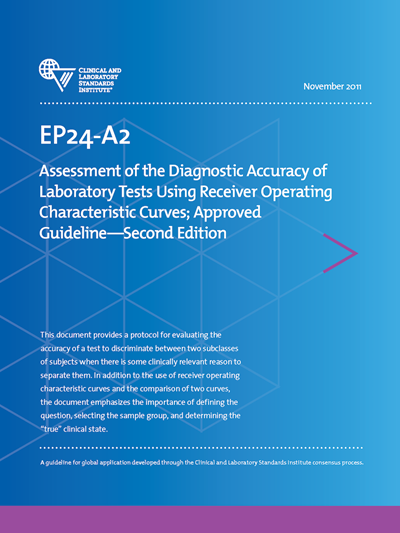CLSI EP24
Assessment of the Diagnostic Accuracy of Laboratory Tests Using Receiver Operating Characteristic Curves, 2nd Edition
This document provides a protocol for evaluating the accuracy of a test to discriminate between two subclasses of subjects when there is some clinically relevant reason to separate them. In addition to the use of receiver operating characteristic curves and the comparison of two curves, the document emphasizes the importance of defining the question, selecting the sample group, and determining the "true" clinical state.
This document is available in electronic format only.
This reaffirmed document has been reviewed and confirmed as suitable to remain published without revision to content, as of April 2016. The document’s next scheduled review is generally five years after the reaffirmation date.
Member price:
List Price:Details
Chairholder: Martin H. Kroll, MD
Date of Publication: November 30, 2011
Order Code PDF: CLSI EP24A2E
ISBN Number: 1-56238-778-2
Order Code Print: print not available
Edition: Second
Pages: 56
CLSI EP24 Additional Details
If interested in ordering larger quantities of this document in print, please contact us here.
The U.S. Food and Drug Administration (FDA) has evaluated and recognized this approved-level consensus standard for use in satisfying a regulatory requirement.

